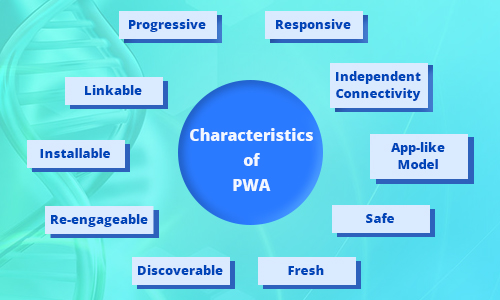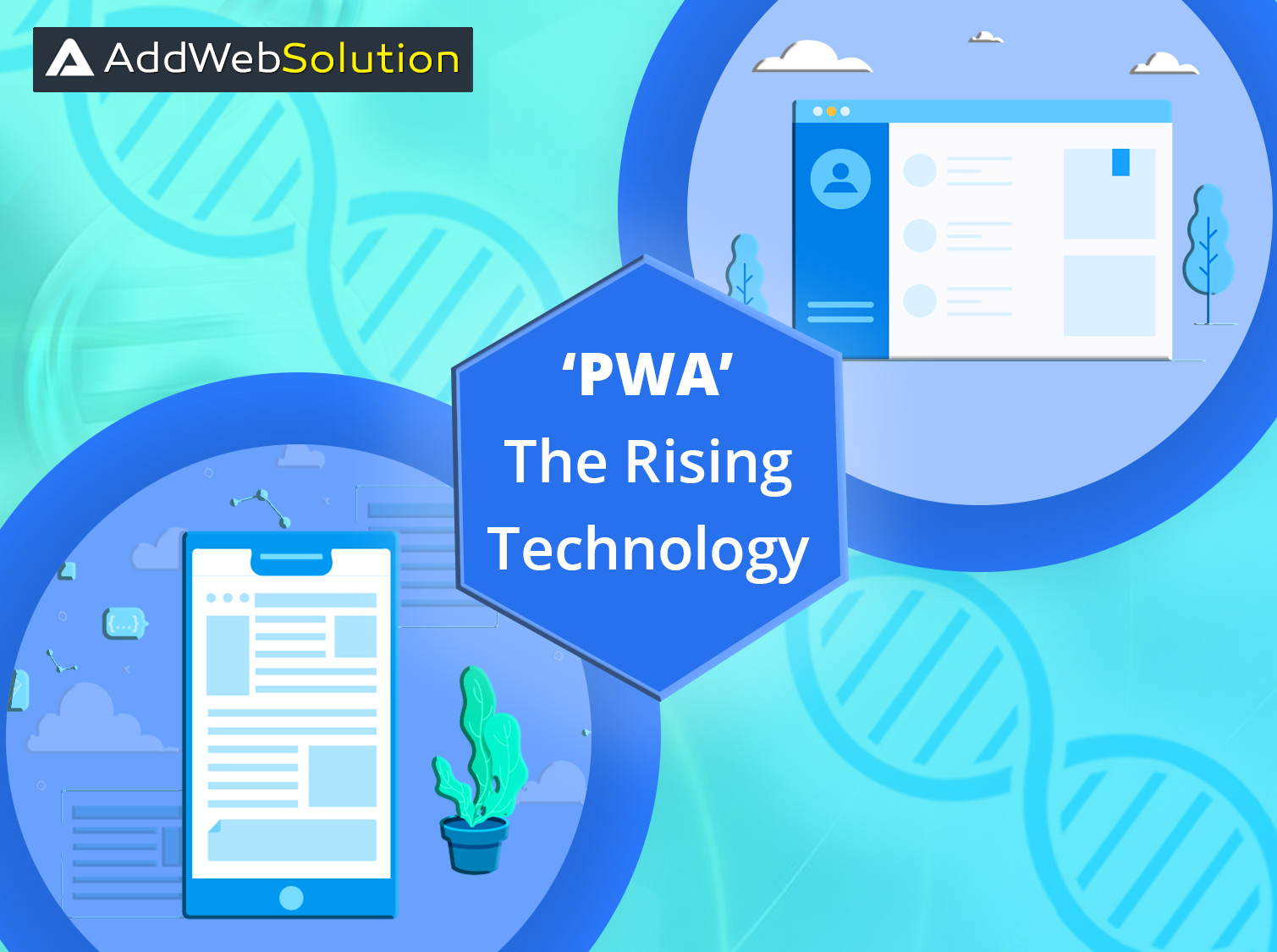It may seem to you that PWA is a distant cousin of PDA. But no, both of them belongs to a two entirely different set of clans and has nothing common between each other. Except, the sudden rise that both of them has experienced in recent times. But well, let us skip talking about the latter one and explore more about the former one; PWA – Progressive Web Application, the one which is more familiar to us and is also a part of our daily lives.
Progressive Web Application is rightly said to be a clone child of the web and the mobile application. A child that is meant for the web but comes with the integral elements of the mobile application. Well, it works pretty much like the native application and hence extensive and constant comparison of the two. We, at AddWeb, have adopted it at its early stage and by far have developed and designed a number of Progressive Web Applications. Because it’s surely the need of the hour.
The Birth & the Rise of PWA:
The best of the mobile application, meet the best of the web to create a progressive web application that’s not just user-friendly but user-favoured. And anything that is in the favour of the user ultimately works in the favour of the business/brand. Let us share a few such amazing aspects of PWA that you need to know, even if you’re not a techie yourself.
- The user does not need to install anything and can use it directly from the web browser.
- The PWA is an application to be browsed on the web, which comes with mobile application features like push notifications, search filters, GPS, et al.
- PWA uses the modern API along the traditional progressive app enhancement strategy in order to create a powerful cross-platform web application.
- A PWA site is built in such a manner that it works well even under poor network, hence the user is more likely to praise and use it.

Characteristics of PWA:
It was the designer Frances Berriman and the Google Chrome engineer Alex Russell, who came up with the name ‘Progressive Web Application’. The idea of developing something like PWA emerged from the need of creating a new kind of web application that came with fresh and innovative features, which also supported the revolutionary version of the modern browser. So let us share those attributes of that your application a Progressive Web Application. To be precise, let us share the attributes of the same as shared by the makers of PWA.
Before we jump into a detailed list of characteristics that a site must have, to be able to recognize as a PWA, let us first share the three core must-have attributes of a PWA. Below are those three standing pillars of confirming a site for being a PWA:
- Runs under HTTPS
- Needs a Web App Manifest
- Needs a Service Worker
The above three, though being the core attributes, they alone aren’t enough to build the entire building of PWA. There are also other significant characteristics for any web application to be able to qualify for a PWA. Let us now throw some light on them.
- Progressive
The web application should be able to work equally and effortlessly for every user, regardless of their web browser. This is possible because these applications are built with progressive enhancement as a core tenet. - Responsive
The web application fits and adjusts with any form of device’s screen size, be it a desktop, mobile, tablet or any such other technological device for that matter. - Independent Connectivity
The inclusion of enhanced service workers for making the web application independent from network issues. Hence, the users are able to work on the low-quality network or even offline. - App-like Model
The web application needs to be using the app-shell model so that it can interact and navigate just like an application. - Safe
Safety comes first, be it the web or mobile. Hence, the web application is required to be served via HTTPS in order to prevent prying and tampering of the content and data. - Fresh
The service worker update process needs to be followed in order to always remain up-to-date and transparent. - Discoverable
The web application should be easily identifiable and discoverable by the search engine. - Re-engageable
The web application is required to be able to re-engage the visitors by installing the features like push notifications. - Installable
The users are allowed to just keep the respective app on their home screen and do not need to go through the hassle of installing it and eating up the device’s memory. - Linkable
The web application that can be easily shared via URL and without any friction or the necessity to install it.
A site should be encompassing all the above characteristics in order to be classified as a Progressive Web Application, across the web world. An array of internationally celebrated brands are already using the PWA, viz. Starbucks Coffee, The Washington Post, Flipkart, et al. It’s said to have ended up in turning visitors into customers. If you wish to share or add-on to something on this topic, feel free. You can also suggest us with more such topics on PWA, on which you wish to read more about. We promise to try and accumulate them all in our this series of PWA blogs.
Also, if you have a got a query, we’ll be more than happy to help you. Get in touch with our development team and let’s grasp and share more about PWA!
Frequently Asked Questions
A PWA is a hybrid of a website and a mobile application, offering a seamless blend of the best features from both. Unlike traditional websites, PWAs provide a more app-like experience with offline capabilities and faster loading times.
PWAs offer the best of both worlds. They provide the reach of a website while delivering the immersive experience of a native app. With features like offline functionality, push notifications, and faster performance, PWAs enhance user engagement and satisfaction.
PWAs are designed to be responsive, adapting seamlessly to various screen sizes and devices. Their compatibility with different browsers and platforms ensures a consistent and reliable user experience, regardless of the device used.
Yes, PWAs can function offline, allowing users to access certain features and content without an internet connection. This benefits users in areas with intermittent connectivity or those who want to access information on the go.
Security is a priority for PWAs. They are served over HTTPS, ensuring data integrity and protecting user information. PWAs adhere to web security standards, providing a secure environment for users to interact with the application.
Installing a PWA is simple and user-friendly. Users can add a PWA to their device’s home screen directly from the browser, eliminating the need for app store downloads. This streamlined process enhances accessibility and encourages users to engage with the app.
Existing websites can be transformed into PWAs. The process involves adding PWA-specific features and optimizing the site for the best user experience. This allows businesses to leverage their current web presence while incorporating PWA benefits.
PWAs use service workers to cache content, reducing the need for constant server requests. This results in faster loading times, creating a smoother and more enjoyable user experience. Speed is crucial for retaining user engagement.
